-
Car Reviews
- All reviews
- Midsize SUVs
- Small cars
- Utes
- Small SUVs
- Large SUVs
- Large cars
- Sports SUVs
- Sports cars
- Vans
Latest reviews
- Car News
-
Car Comparisons
Latest comparisons
- Chasing Deals
The Seal Performance pairs astonishing acceleration with comfy, laid-back dynamics. It’s an interesting mix – but the RWD models could be sweeter
After the BYD Atto 3 small SUV knocked our collective socks off with just how competent it was as a circa-$50,000 electric vehicle, we’ve waited with anticipation to check out the Chinese brand’s most audacious effort yet – the Seal sedan.
SUVs might be all the rage in Australia but there’s still a market for a svelte, stylish saloon car, as strong sales for the Seal’s chief rival – the Tesla Model 3 – prove.
BYD feeds Tesla a huge quantity of its batteries – including for Australia’s cheapest Model 3 variant – but that is largely where similarities end between the pair.
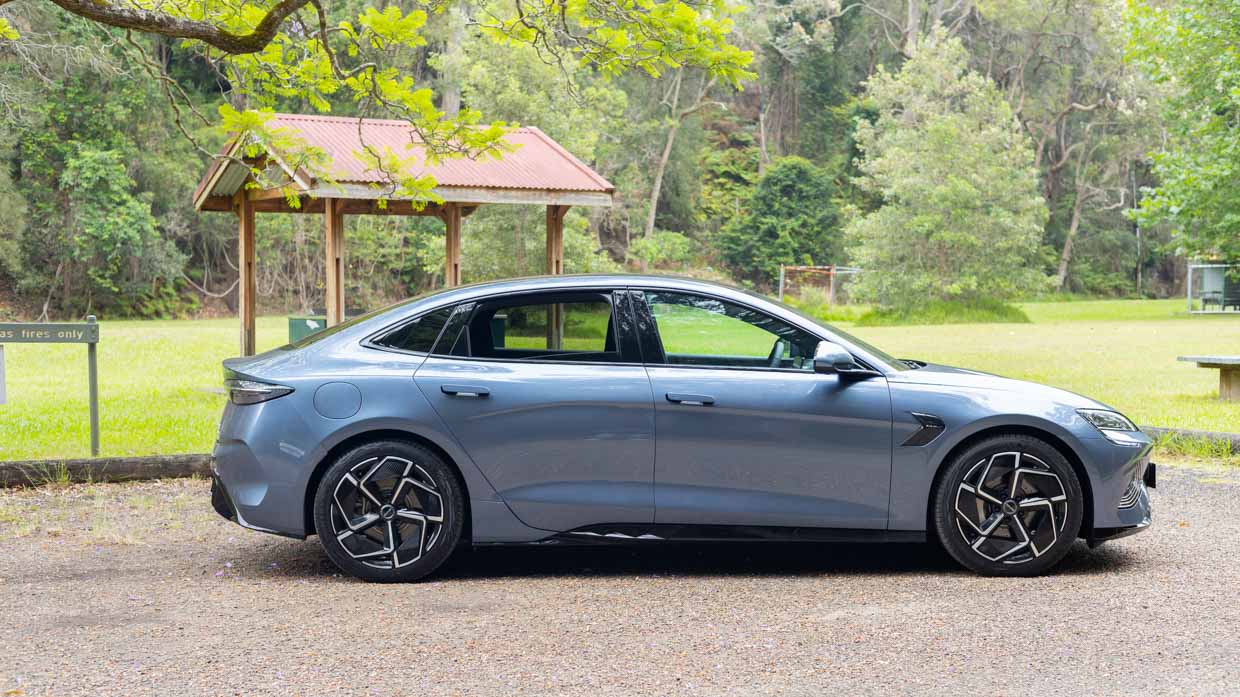
In some ways, BYD feels like the anti-Tesla: its cars feel familiar, in many ways like fully-electrified versions of the petrol or diesel cars Australians already know and love.
That’s as true of the handsome-looking Seal sedan as it was for the Atto 3 small SUV and (also new) Dolphin small hatchback.
The BYD Seal will really appeal to Aussies who have owned or liked cars such as the Toyota Aurion, Holden Commodore, Ford Falcon or even premium models like the Lexus IS or Volvo S60.
Three Seal variants are on their way to Australia as we write: the Dynamic, a rear-wheel drive (RWD) model promising $50K plus on-road costs and 460km range (WLTP); the mid-spec $59K Premium, which retains RWD but upgrades to a bigger battery for 570km range (WLTP); and the car we’re driving first.
That’s the headline-grabbing, $69K Seal Performance, which makes use of the same 82.5kWh LFP battery and 230kW rear motor as the Seal Premium – but it adds an entirely separate 160kW motor (from the Atto 3) to the front axle for colossal 390kW/670Nm outputs.
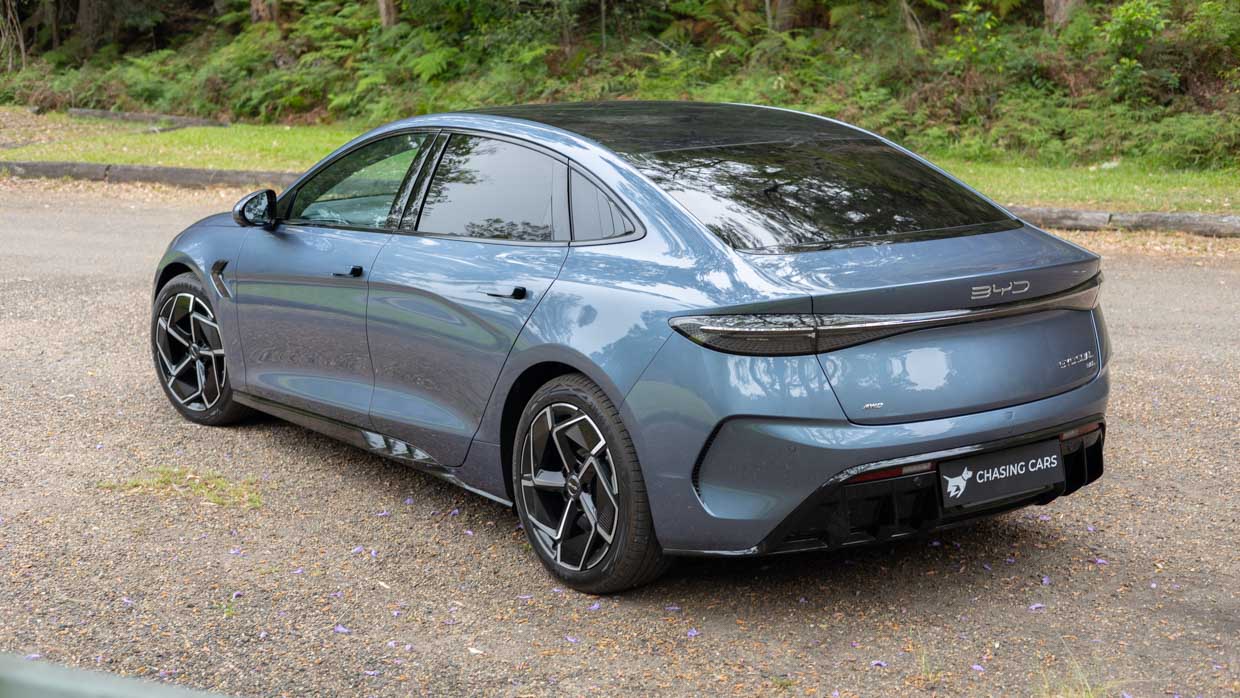
To make sure you don’t miss the accelerative aspirations of the Seal Performance, BYD adds a “3.8S” badge to its tailgate. Yes, its 0-100km/h claim is 3.8 seconds. That’s a little naff for our tastes.
Much of the rest of the Seal’s design avoids the quirky. This brand’s unusual “Build Your Dreams” badge has been banished from the tail – it’s BYD all around now. The shape of the car is pretty attractive – and it received considerable attention on our 500km test.
Our Performance tester was finished in handsome arctic blue ($1500) over a black genuine leather interior (no cost). Driveaway pricing on this top-tier Seal came to around $73,000.
Ahead of our test drive, Australian crash and safety testing body ANCAP rated the BYD Seal five stars for safety. That rating will expire in 2029.
Individual scores were promising: 89 percent for adult occupant protection; 87 percent for child occupant protection; 82 percent for pedestrian/cyclist protection; and 75 percent for safety assistance tech.
Our test drive revealed most safety systems to be well-tuned. We had no complaints about the smoothness of the adaptive cruise control, blind spot monitoring or stability control – and additional praise is due for the clarity of the 360-degree parking camera system.
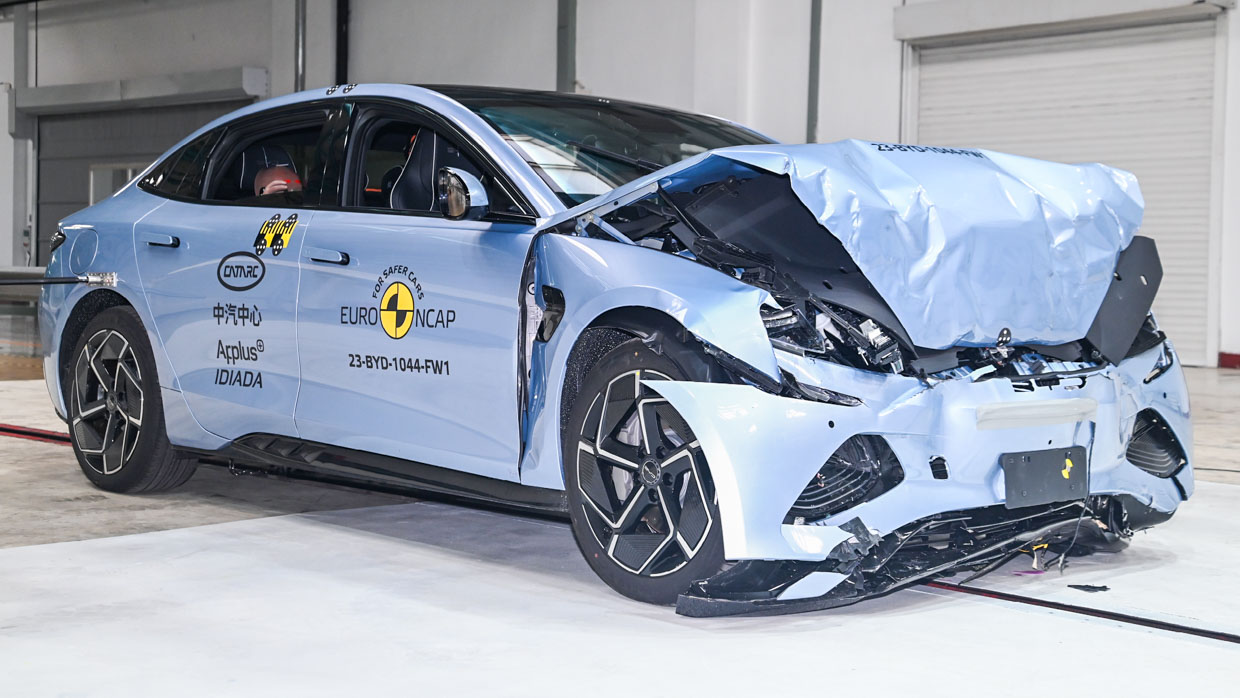
But the Seal’s safety tech is imperfect. The lane keeping system is grabby, returning false positives that saw us turn it off to drive smoothly. The same was true for the speed monitor, which was slow to detect speed signs – meaning the Seal chimed at us for several minutes despite our speeds being legal.
Beyond safety, the Seal has an extensive equipment list. The $69K Performance grade on test was fitted with the following key items:
Five paint colours are available—Aurora White is standard, while Arctic Blue, Atlantis Grey and Cosmos Black attract a $1500 penalty; Atlantis Grey is $2000. Inside, Thaumas Black leather is standard while Ocean Blue costs another $1500. Floor mats cost $219.
From any perspective that is a sharp price tag for a sedan that ostensibly apes the likes of the BMW M3 and Audi RS4 – at least in terms of straight-line speed.
And so comes our first warning: while the Seal Performance is violently accelerative in sport mode, it’s actually not that sporty as a concept. Like the smaller, cheaper Atto 3 SUV, the tuning of the Seal biases comfort, even at this end of the range.
Plenty of Australians will prefer that to an overly firm ride, though the cushy suspension of the Seal isn’t perfect. Possibly because it’s just such a fast car, drivers might expect a more tied-down body than what the Seal actually delivers.
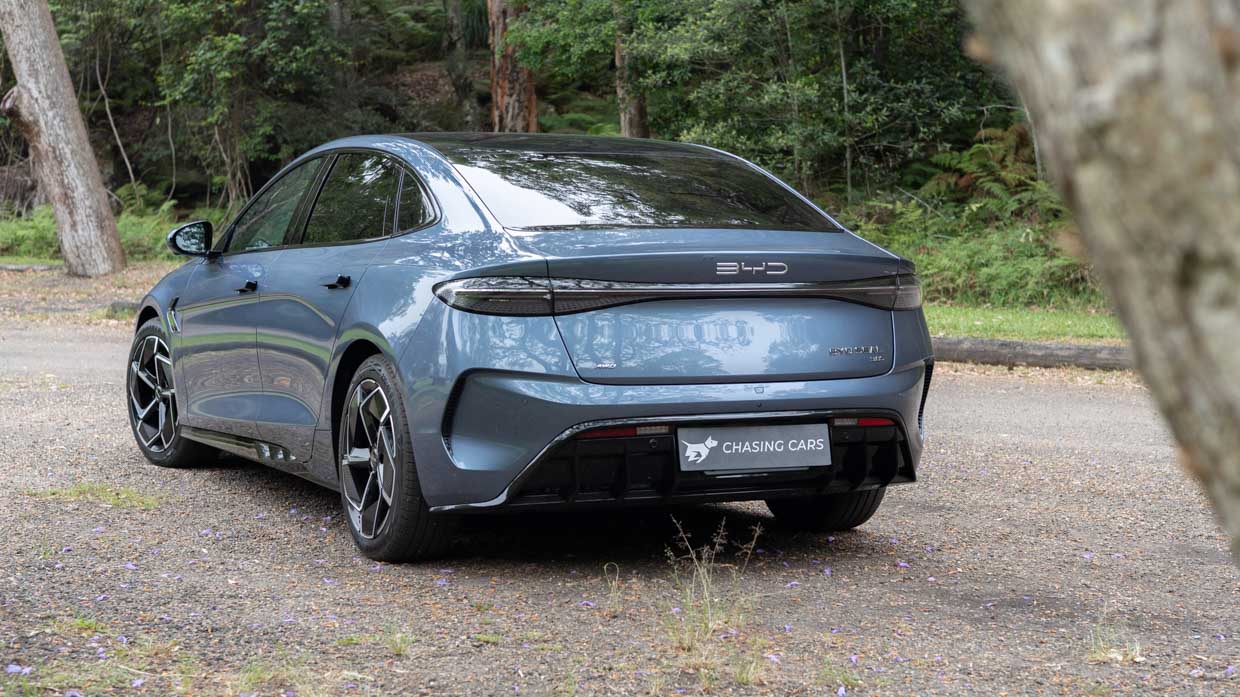
Drive a curving, bumpy country road – common in Australia – and it’s easy to find the Seal Performance’s limits. While vast power is on tap, fairly loose body control and gently underdamped suspension limits how much of the 390kW you can confidently deploy.
The suspension of the Seal Performance, which features frequency-selective dampers – isn’t too bad, especially at this price, but it’s a long way from the supple yet controlled ride of petrol sports sedans like the Skoda Octavia RS ($56,990 driveaway) or BMW M340i ($106,200 before on-road costs).
A more apt comparison is probably to the Tesla Model 3 (from $61,900 before on-road costs), which is currently without a Performance trim in Australia. The Tesla is more tied down but less supple in urban areas. The Seal is comfier in the city.
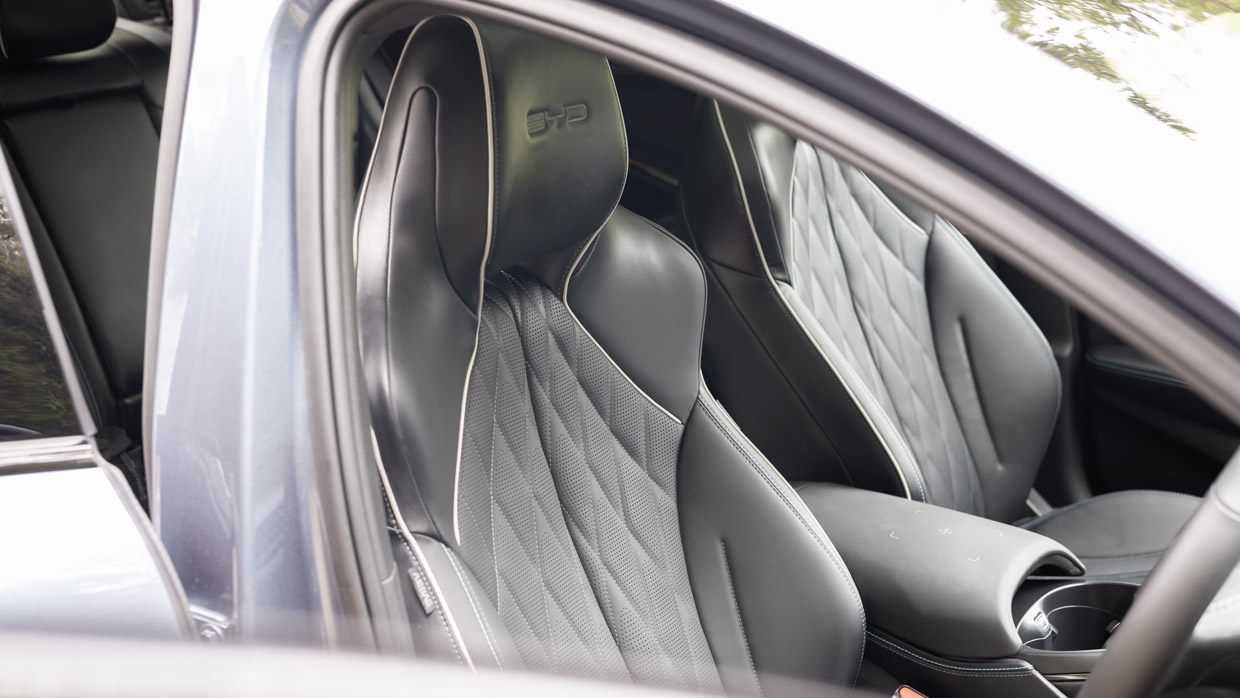
Certainly, the BYD Seal’s ride quality is superior to that of the Polestar 2, which even after a suspension upgrade continues to be considerably overdamped and stiff to the point of being unpleasant on a country road.
If we were BYD, we’d be thinking about how to further hone the dampers of the Seal Performance to find a more ideal blend of low-speed comfort with high-speed body control and critical damping.
There are other issues with the Seal Performance’s dynamics. The steering is well below average: the feel through the rack is totally artificial with an odd motor-drive sensation about five degrees off centre.
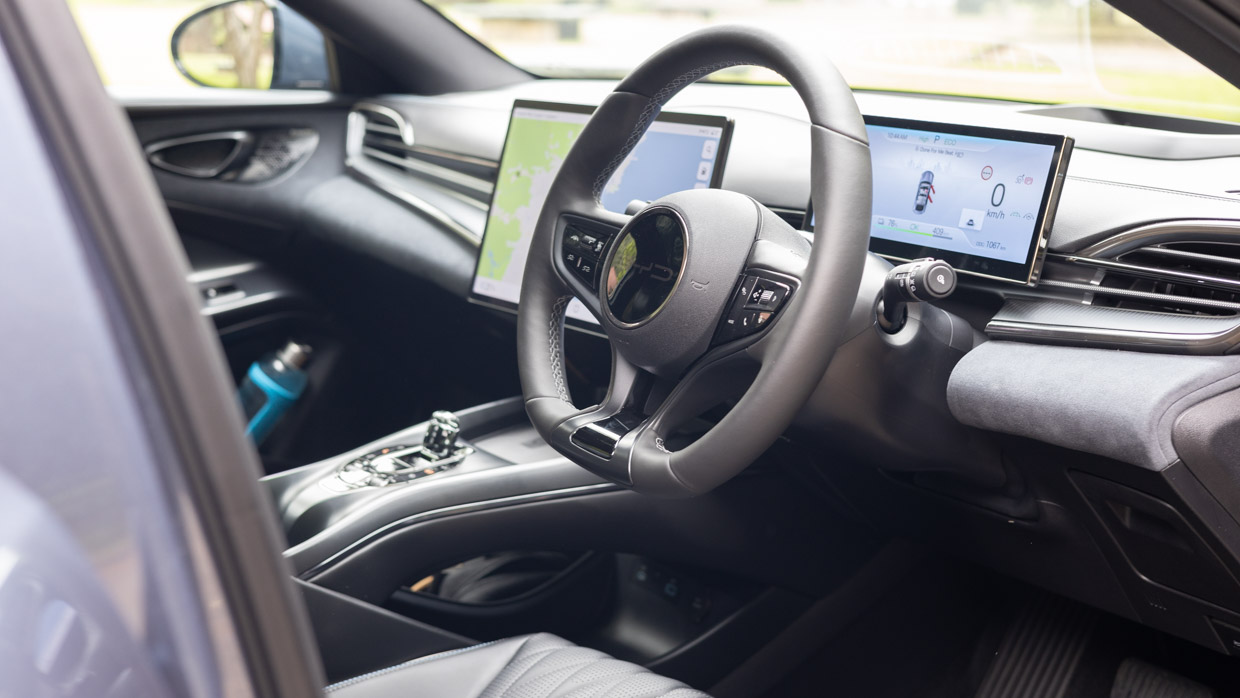
You get used to the Seal’s unusual steering feel, but there’s a universe of difference in perceived enjoyment between the steering of the Seal and more driver-centric EVs like the BMW i4 (from $85,900 before on-road costs) and especially the Porsche Taycan (from $164,400).
Perhaps the biggest beige flag confirming the Seal’s middle-of-the-road handling aspirations are the fitment of Continental EcoContact tyres. These are quality items but they aren’t designed for sporty driving. They give up quickly as cornering speeds increase, particularly in the wet.
More or less, the Seal is perfectly competent on a backroad, but you’re held back from true enjoyment of the car by the steering feel and the pogoing from the underdamped ride.
Peel off the B-roads and stick to highways – or simply your daily commute – and the tuning of the Seal’s dynamics come more into their own. The Performance always exhibits a bit of fidgeting from its suspension but it’s easy enough to ignore.
These environs make it easier to enjoy the Seal’s decent refinement, good Dynaudio stereo and comfortable seats, which are finished in leather in the Premium and Performance grades – in either black or a lighter blue theme.
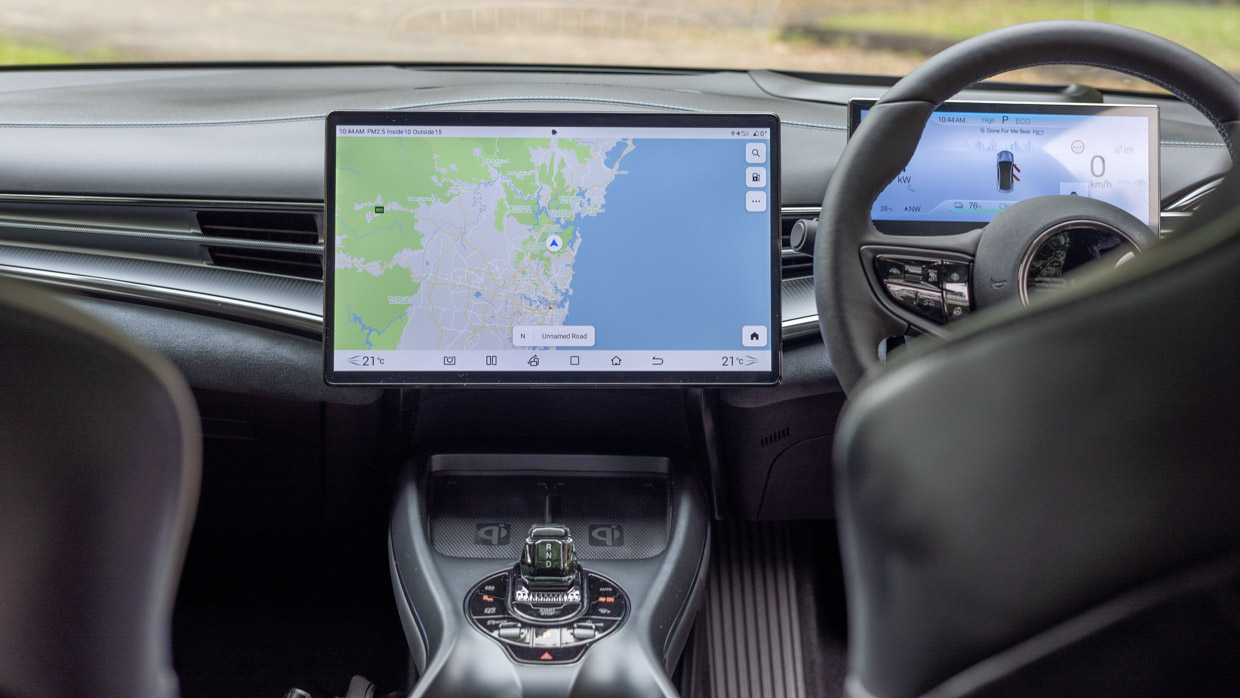
One key advantage of opting for the Performance grade is that its 390kW of power is so accessible – and it becomes addictive. Overtaking on the highway or diving into gaps in traffic are all effortless.
Two regenerative braking modes are available. While ‘high’ mode initially slows progress quite abruptly, deceleration tails off quickly. There is no true one-pedal driving mode.
A downside is that the efficiency takes a nosedive if you exploit the ‘performance’ on a regular basis. Our range test scores nabbed us the following:
| BYD Seal Performance 82.5kWh | ||
| Urban driving | 16.3kWh/100km | 506km range (urban) |
| Highway driving | 17.6kWh/100km | 468km range (highway) |
| Sporty driving | 23.2kWh/100km | 355km range (sporty) |
The efficiency isn’t bad but a Polestar 2, Tesla Model 3 or Hyundai Ioniq 6 are more economical to varying degrees – though there isn’t that much in it.
Like with almost every EV on the market – Nissan Leaf and Audi Q8 E-tron aside – touring prospects for the BYD Seal are somewhat limited by the lack of any spare wheel.
That said, it’s a decent load-lugger, with a deep 400-litre boot supplemented by a nicely-finished 50-litre frunk beneath the bonnet.
Charging the Seal is fairly straightforward, thanks to its Type 2/CCS port type that is very common in Australia – but the recharging speeds could be better.
For AC charging, the three-phase charging gear fitted to the Seal in Europe is removed for a cheaper single-phase onboard charger in Australia, limiting AC charging speeds to 7kW.
But even 7kW charging is still quick enough to deliver a full recharge overnight (12 hours) if you have a suitable wallbox.
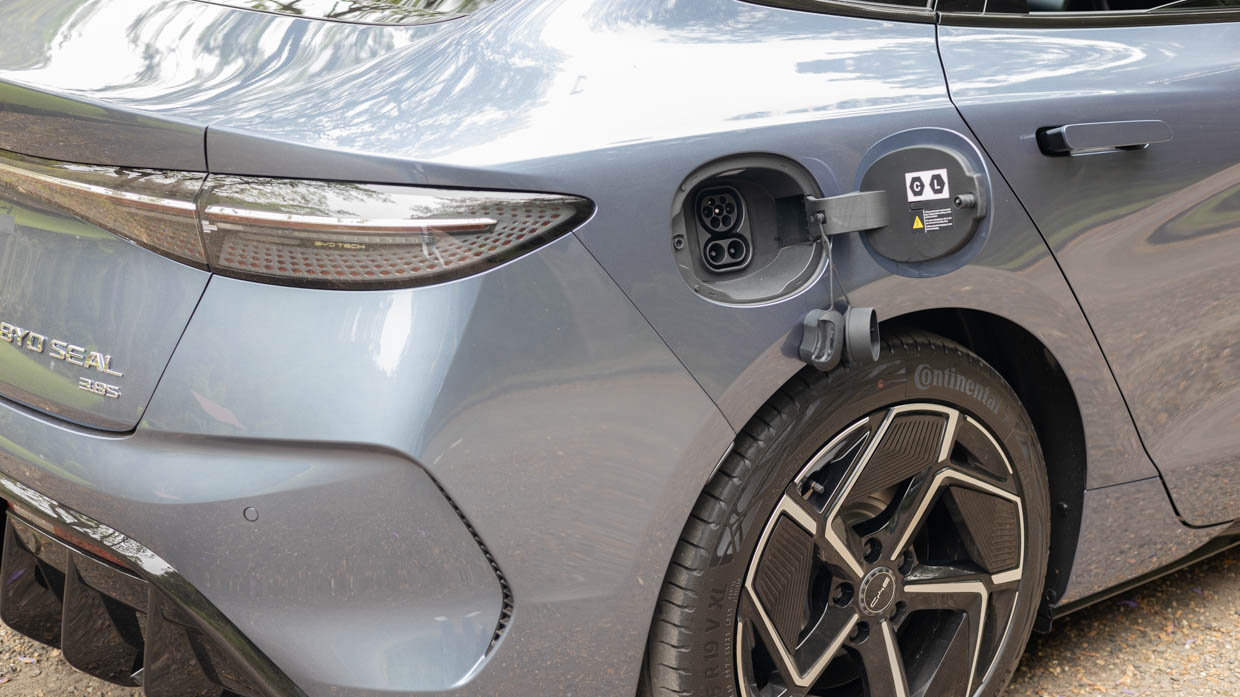
On the DC charging front, the Seal initially looks impressive because BYD claims 150kW peak charging speeds – which is quite quick for an LFP battery.
However, our independent recharging test resulted in a real-world peak of only 137kW while charging from 10 to 80 percent averaged just 87kW, which is lethargic – the same charge session in a Polestar 2 averaged 122kW – forty percent faster.
In layman’s terms, that means that road trips in the Seal will take longer because it recharges more slowly than key rivals – most of all the Hyundai Ioniq 6, which rips along at up to 239kW.
A factor in BYD’s favour is that its standard fitment of LFP (lithium iron phosphate) batteries for the Seal allow you to access more of the battery on a regular basis.
That sounds confusing – but the reason is that LFP batteries tolerate regular charging to 100 percent, while more common battery chemistry types commonly advise limiting most charging to 80 percent.
If BYD is the anti-Tesla, that characterisation is clearest inside. The Seal’s exterior shape might be similar to the Model 3, but the interior concept is entirely different.
Tesla models have overtly minimalist interiors, typically with only one screen in the front row. The American brand went further for the recent facelift of the Model 3 by removing indicator and wiper stalks, placing these controls on the steering wheel.
While we didn’t find the Model 3 that difficult to get used to – and many attributes of Tesla’s interior are very functional – there’s no doubt the Seal interior is considerably easier to learn in a short space of time.
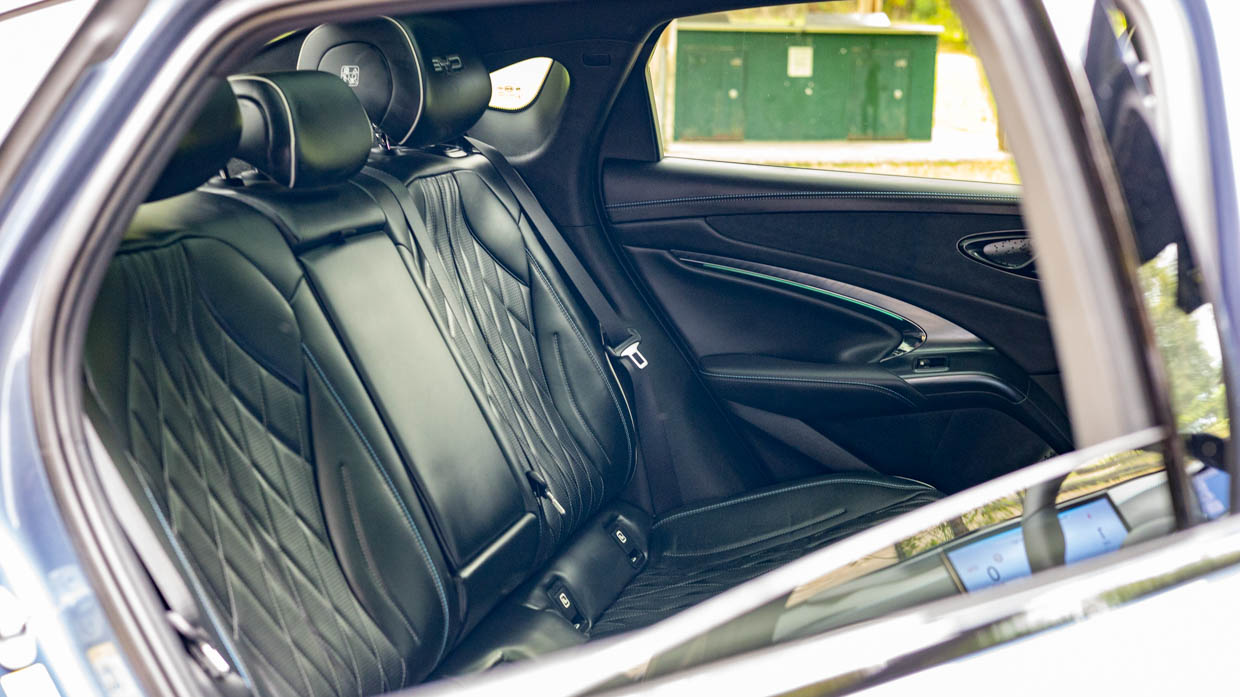
The BYD offers a familiar, conventional interior experience with buttons and switches for common controls such as volume and drive modes, plus typical stalks for lights and wipers.
Unlike the Model 3, the Seal also has a second front row screen dedicated to the driver, displaying speed, trip computer readouts and other symbols in your line of sight – instead of offset, on the central touchscreen, as in the Tesla.
The Seal still has a huge central display measuring 15 inches in diameter – even with a trick landscape-to-portrait rotating function. But while the software is pretty intuitive, it is not as sophisticated, up to date or mature-looking as that of the Tesla.
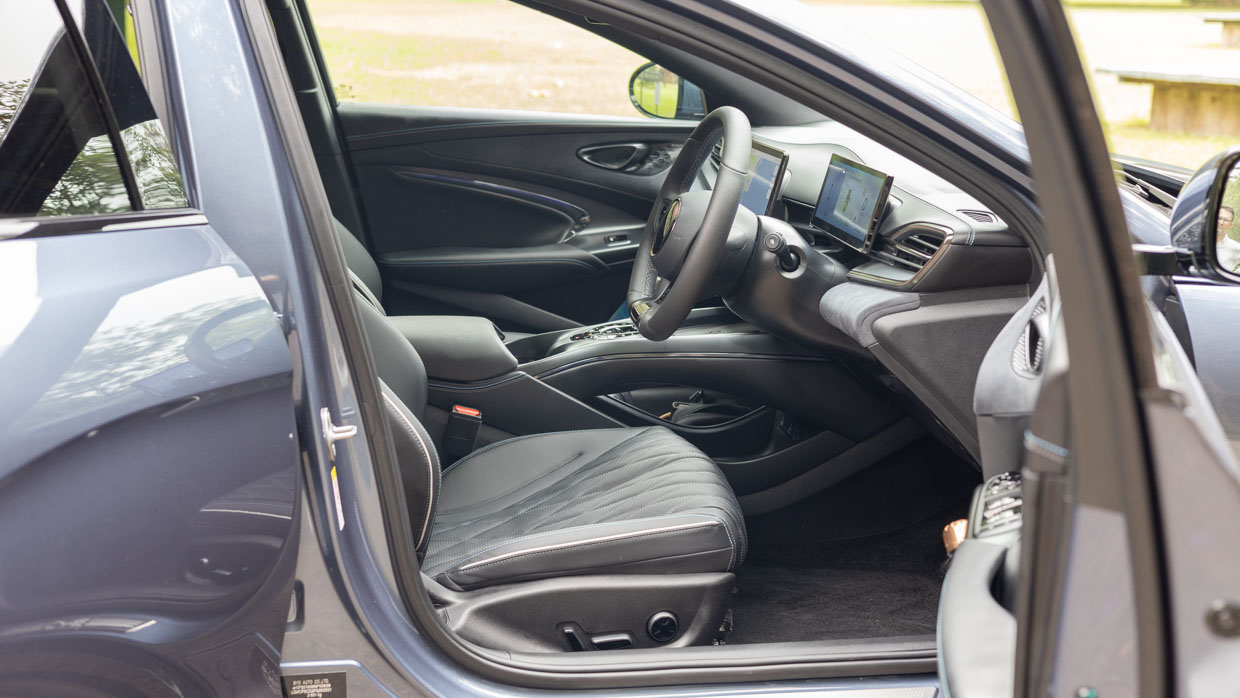
Fonts, colours, icons and menu layouts betray a somewhat shabby and downmarket approach to the Seal’s software. That said, reliability was fine on our 500km test with none of the systems dropping out at any time.
Smartphone users might prefer the Seal’s fitment of Apple CarPlay and Android Auto – unavailable in any Tesla – though these systems are strictly wired, not wireless.
BYD publishes fixed servicing costs for the Seal, which has scheduled maintenance intervals of 12 months or 20,000km.
Some EVs, including Teslas, have condition-based servicing where owners only need to book maintenance when they are pinged by the car’s app. The Seal is more traditional.
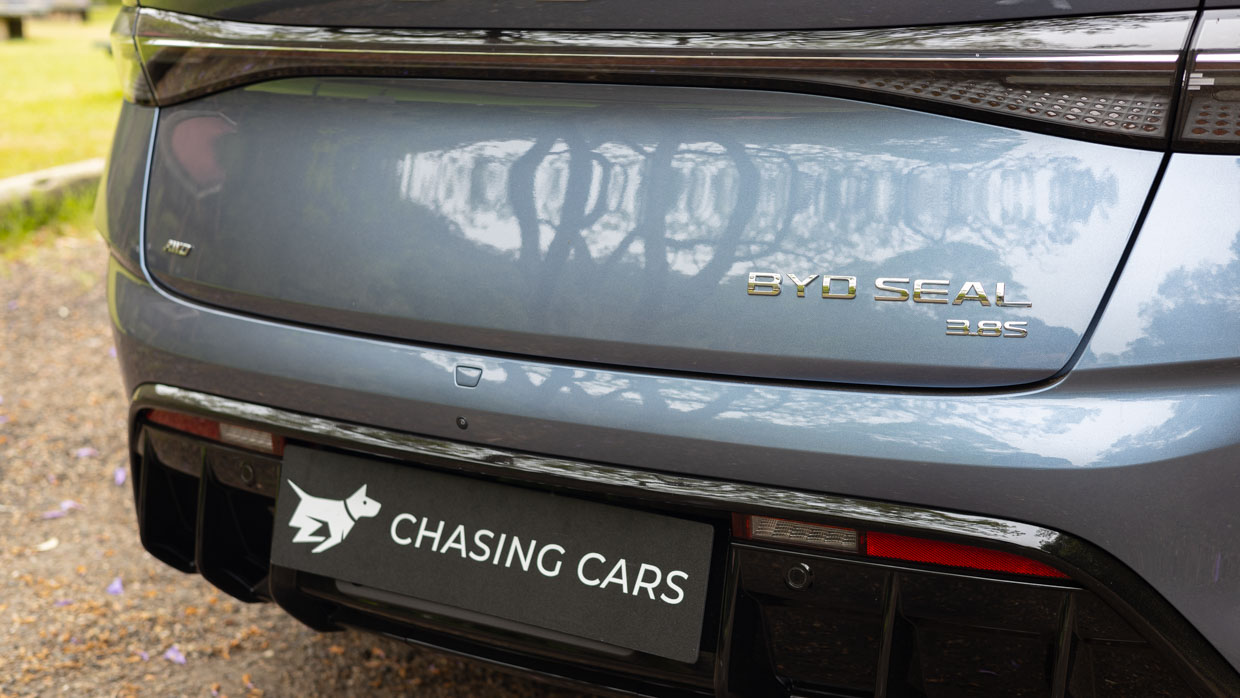
The first five years/100,000km of scheduled servicing totals $1384, making the sedan cheaper than most combustion rivals to maintain.
Warranty is six years/150,000km for the vehicle and eight years/160,000km for the battery.
Early in 2024 we’ll drive the remaining two Seal grades: the 61.4kWh Dynamic RWD model, and the 82.5kWh Premium RWD variant.
We suspect that one of those two models will end up being the Seal sweet spot.
The Seal Performance offers staggering amounts of power that until recently were the domain of supercars. Sub-four second acceleration to 100km/h is astonishing.
But there is a strong element of the Seal Performance writing cheques that it can’t quite cash – at least if you’re looking for a holistic sports sedan.
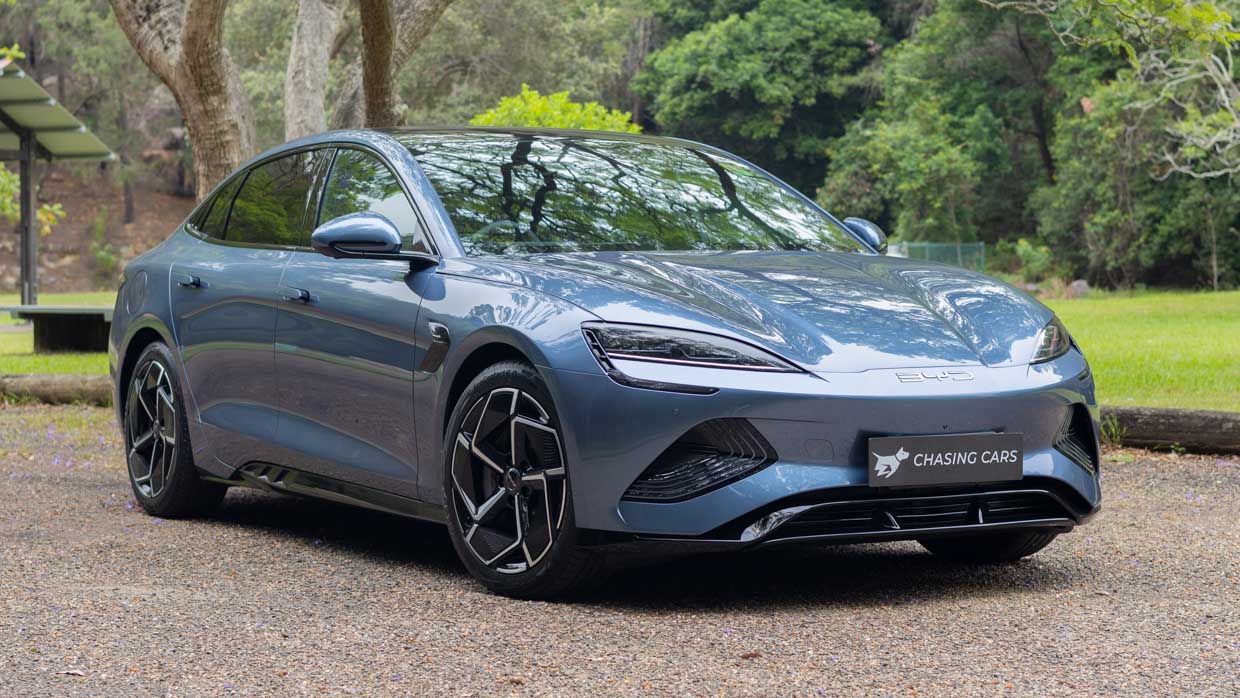
If you want a cushy, comfy four-door with huge accelerative capacity, the Seal Performance could well be right up your alley.
However, we think there is still work to be done to hone the suspension to blend compliance and suppleness with adequate body control to enjoy a country road drive to the level of fun combustion cars, which do compete with the Seal on price.
The rival Tesla Model 3 also still offers the certainty of the Tesla Supercharger network which needs to be taken into account if you do significant country kilometres.
Still, there is a fundamentally good car beneath the Seal’s attractive sheet metal. It may be that one of the less ambitious RWD models is a better match to the BYD’s inherent strengths.
About Chasing cars
Chasing Cars reviews are 100% independent.
Because we are powered by Budget Direct Insurance, we don’t receive advertising or sales revenue from car manufacturers.
We’re truly independent – giving you Australia’s best car reviews.
The estimate provided does not take into account your personal circumstances but is intended to give a general indication of the cost of insurance, in order to obtain a complete quote, please visit www.budgetdirect.com.au. Estimate includes 15%^ online discount.
^Conditions Apply
Budget Direct Insurance arranged by Auto & General Services Pty Ltd ACN 003 617 909(AGS) AFSL 241 411, for and on behalf of the insurer, Auto & General Insurance Company Limited(ABN 42 111 586 353, AFSL 285 571).Because we don’t know your financial needs, we can’t advise you if this insurance will suit you. You should consider your needs and the Product Disclosure Statement before making a decision to buy insurance. Terms and conditions apply.
Indicative quote based on assumptions including postcode , 40 year old male with no offences, licence suspensions or claims in the last 5 years, a NCD Rating 1 and no younger drivers listed. White car, driven up to 10,000kms a year, unfinanced, with no modifications, factory options and/or non-standard accessories, private use only and garaged at night.
^Online Discounts Terms & Conditions
1. Discounts apply to the premium paid for a new Budget Direct Gold Comprehensive Car Insurance, Third Party Property Only or Third Party Property, Fire & Theft Insurance policy initiated online on or after 29 March 2017. Discounts do not apply to optional Roadside Assistance.
2. Discounts do not apply to any renewal offer of insurance.
3. Discounts only apply to the insurance portion of the premium. Discounts are applied before government charges, taxes, levies and fees, including instalment processing fees (as applicable). The full extent of discounts may therefore be impacted.
4. We reserve the right to change the offer without notice.